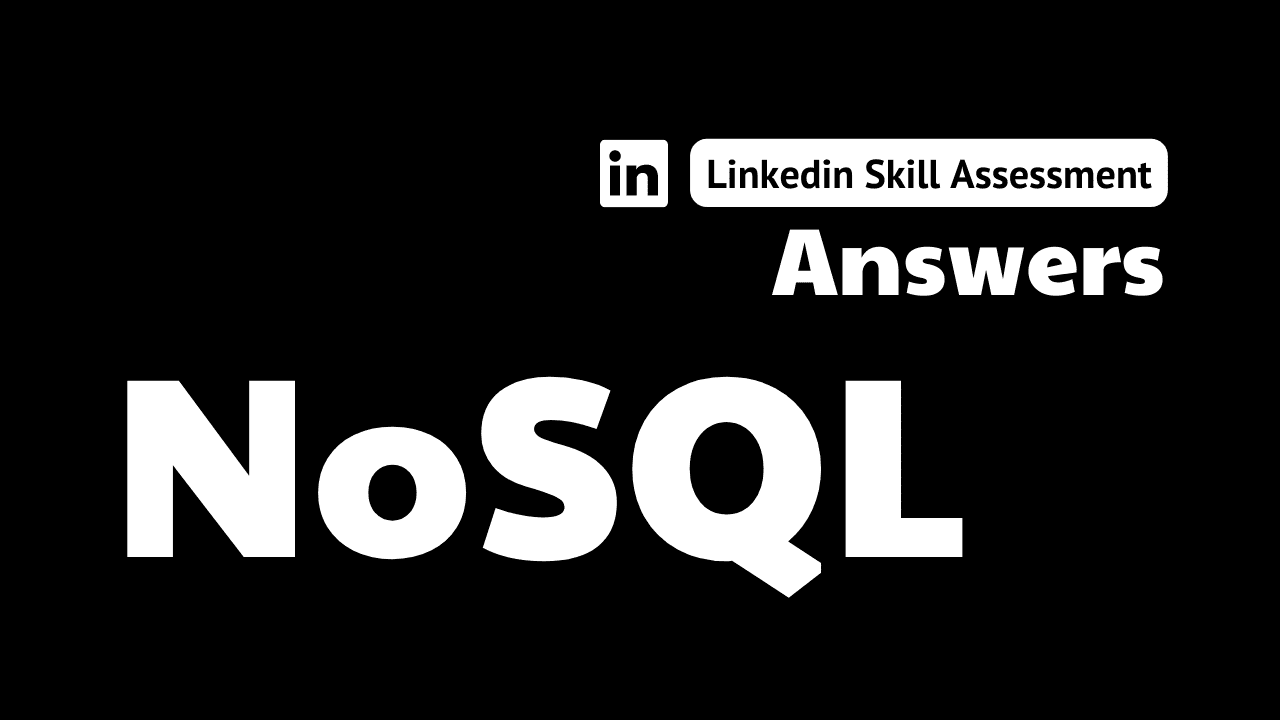
nosql linkedin assessment answers
1. You need to create a document database that supports database triggers. Which NoSQL database should you use?
- Bigtable
- DynamoDB
- MongoDB
- Redis
2. You need to create a scalable database to store and querv JSON data What do you use?
- a ledger database
- a relational database
- a graph database
- a document database
3. You need to create a scalable database that allows you to share documents across authorized mobile clients in real time. What Google NoSQL database should you use?
- Bigtable
- Memorystore
- Firebase
- Datastore
4. You are designing a MongoDB schema to support queries that will include lookups. What should you do?
- Create an index on the key value used as the foreign key.
- Create a multicolumn index on the key value used as the foreign key and the most unique column in the document.
- Create a multicolumn index on the key value used as the primary and also the foreign key.
- Create an index on the key value used as the primary key.
5. You need to implement the simplest possible scalable, in-memory cache for your AWS application. Which service do you select?
- DynamoDB
- ElastiCache using Memcached
- DynamoDB Accelerator (DAX)
- ElastiCache using Redis
6. You want to test HBase on your laptop using the fewest number of steps What do you do?
- Set up Hadoop in local mode.
- Set up Hadoop in pseudo-distributed mode.
- Set up HBase in local mode.
- Set up HBase in pseudo-distributed mode.
8. You need to create a scalable database that supports immutable writes. What do you use?
- a graph database
- a key-value database
- a ledger database
- a columnstore database
9. You are doing data modeling for Google Bigtable. Which statement expresses if and when you should split entities across multiple rows?
- Keep all information for an entity in a single row.
- Split entities across multiple rows if the entity data is over thousands of MBs, or if it does not need atomic updates and reads.
- Keep all information for an entity in a single row. Store related entities in adjacent rows.
- Split entities across multiple rows if the entity data is over hundreds of MBs, or if it does not need atomic updates and reads.
10. For your mobile application, you need to select a Google cloud database that can support compound, filtered document queries. Which do you choose?
- Cloud Spanner
- Cloud Firebase
- Cloud SQL
- Cloud Firestore
11. You want to return a list of all elements in two Redis sets. Which keyword do you use?
- sismember
- sunion
- smembers
- returnall
13. Database availability is measured by which metric?
- the amount of service calls
- the number of nines
- the amount of service costs
- the number of minutes
14. Which two characteristics define Amazon Quantum Ledger Database (QLDB)?
- key-value data model; transactions with tunable consistency
- document data model: transactionallv consistent with ACID semantics
- key-value data model; transactionally consistent with ACID semantics
- document data model; transactions with tunable consistency
15. You need to create a data store for the catalog for your new ecommerce application. Your company is a startup, so the catalog schema may evolve. Which do you choose?
- MySQL
- Redis
- MongoDB
- Ne04j




